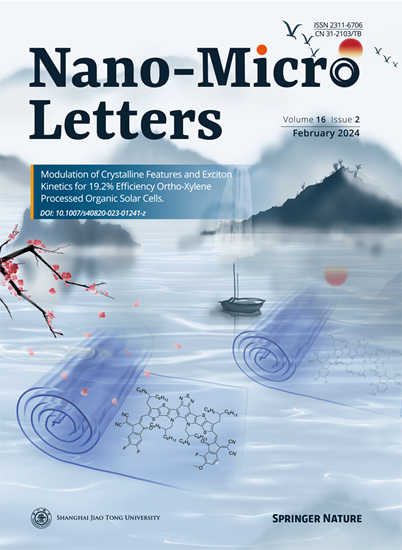Metallic WO2-Promoted CoWO4/WO2 Heterojunction with Intercalation-Mediated Catalysis for Lithium-Sulfur Batteries.
IF 36.3
1区 材料科学
Q1 Engineering
引用次数: 0
Abstract
Lithium-sulfur (Li-S) batteries require efficient catalysts to accelerate polysulfide conversion and mitigate the shuttle effect. However, the rational design of catalysts remains challenging due to the lack of a systematic strategy that rationally optimizes electronic structures and mesoscale transport properties. In this work, we propose an autogenously transformed CoWO4/WO2 heterojunction catalyst, integrating a strong polysulfide-adsorbing intercalation catalyst with a metallic-phase promoter for enhanced activity. CoWO4 effectively captures polysulfides, while the CoWO4/WO2 interface facilitates their S-S bond activation on heterogenous catalytic sites. Benefiting from its directional intercalation channels, CoWO4 not only serves as a dynamic Li-ion reservoir but also provides continuous and direct pathways for rapid Li-ion transport. Such synergistic interactions across the heterojunction interfaces enhance the catalytic activity of the composite. As a result, the CoWO4/WO2 heterostructure demonstrates significantly enhanced catalytic performance, delivering a high capacity of 1262 mAh g-1 at 0.1 C. Furthermore, its rate capability and high sulfur loading performance are markedly improved, surpassing the limitations of its single-component counterparts. This study provides new insights into the catalytic mechanisms governing Li-S chemistry and offers a promising strategy for the rational design of high-performance Li-S battery catalysts.金属WO2促进CoWO4/WO2异质结与插层催化锂硫电池。
锂硫(li -硫)电池需要高效的催化剂来加速多硫化物的转化,减轻穿梭效应。然而,由于缺乏合理优化电子结构和中尺度输运性质的系统策略,催化剂的合理设计仍然具有挑战性。在这项工作中,我们提出了一种自转化的CoWO4/WO2异质结催化剂,将强多硫化物吸附插层催化剂与金属相促进剂结合在一起以增强活性。CoWO4能有效捕获多硫化物,而CoWO4/WO2界面有利于其在多相催化位点上的S-S键活化。CoWO4具有定向嵌入通道,不仅是锂离子的动态储层,而且为锂离子的快速迁移提供了连续、直接的途径。这种跨异质结界面的协同作用增强了复合材料的催化活性。结果表明,CoWO4/WO2异质结构的催化性能得到了显著提高,在0.1 c下可提供1262 mAh g-1的高容量,并且其速率能力和高载硫性能得到了显著提高,超越了单组分同类材料的局限性。该研究为研究锂硫电池的催化机理提供了新的见解,并为高性能锂硫电池催化剂的合理设计提供了有希望的策略。
本文章由计算机程序翻译,如有差异,请以英文原文为准。
求助全文
约1分钟内获得全文
求助全文
来源期刊

Nano-Micro Letters
NANOSCIENCE & NANOTECHNOLOGY-MATERIALS SCIENCE, MULTIDISCIPLINARY
CiteScore
32.60
自引率
4.90%
发文量
981
审稿时长
1.1 months
期刊介绍:
Nano-Micro Letters is a peer-reviewed, international, interdisciplinary, and open-access journal published under the SpringerOpen brand.
Nano-Micro Letters focuses on the science, experiments, engineering, technologies, and applications of nano- or microscale structures and systems in various fields such as physics, chemistry, biology, material science, and pharmacy.It also explores the expanding interfaces between these fields.
Nano-Micro Letters particularly emphasizes the bottom-up approach in the length scale from nano to micro. This approach is crucial for achieving industrial applications in nanotechnology, as it involves the assembly, modification, and control of nanostructures on a microscale.
 求助内容:
求助内容: 应助结果提醒方式:
应助结果提醒方式:


